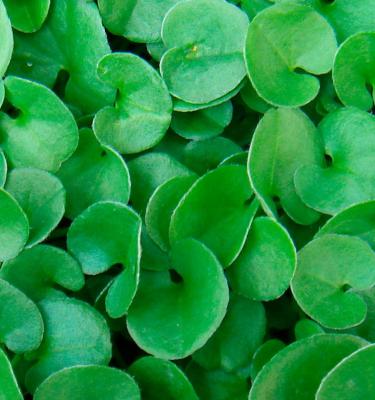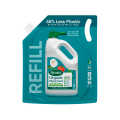

How to grow & care for Dichondra Repens
Dichondra (Dichondra ripens), also called Kidney Weed, is a fast growing, evergreen ground cover that’s easy to grow. The small green leaves of Dichondra mean this plant works well as a lawn alternative or as a gap filler between stepping stones. For a dramatic container display, Dichondra will quickly spill over the sides of pots or hanging baskets - use it to underplant taller growing plants in pots.
Dichondra will grow anywhere from part shade to full sun and in a range of moist soil types that are free draining. Dichondra is native to Australia and New Zealand so it’s well suited to growing in most of our climate zones - except the tropics. With regular water during the warmer months, Dichondra will remain green and lush throughout the year.
Top 5 steps to growing Dichondra
- Grow Dichondra as a lawn substitute, ground cover or a plant to fill gaps between stepping stones.
- Dichondra prefers a part shade to full sun position - if you have very hot, dry summers choose a spot with some protection from the hottest afternoon sun.
- Dichondra can be grown in pots or planters, just use a suitable potting mix like Scotts Osmocote Premium Potting Mix and choose a pot with good drainage
- Fertilise Dichondra at twice a year in spring and summer with an all purpose garden bed fertiliser like Scotts Osmocote Plus Organics All Purpose (including Natives) Plant Food & Soil Improver or Scotts Osmocote Controlled Release Fertiliser: Garden Beds.
- Dichondra is very low maintenance - no mowing or pruning required!
Shopping List
- A Dichondra potted plant
- To fertilise - Scotts Osmocote Plus Organics All Purpose (including Natives) Plant Food & Soil Improver or Scotts Osmocote Controlled Release Fertiliser: Garden Beds.
- To improve the soil before planting - Scotts Osmocote Compost Premium Soil Improver
- Garden Shovel
- If growing in pots, you’ll need Scotts Osmocote Premium Potting Mix + Scotts Osmocote Plus Organics All Purpose (including Natives) Plant Food & Soil Improver and a suitable pot or container
Preparation
Dichondra will tolerate a full sun to part shade position, if you have particularly hot and dry summers choose a spot with some protection or shelter from the hottest afternoon sun if possible.
Prepare the soil for planting Dichondra by mixing Scotts Osmocote Compost Premium Soil Improver and Scotts Osmocote Plus Organics All Purpose (including Natives) Plant Food & Soil Improver through the soil in your chosen area.
Planting in the garden
Plant your Dichondra into the prepared soil - dig the hole twice as wide as the original pot and the same depth. If you’re trying to create a ground cover or lawn substitute with your Dichondra, allow 25-30cm between plants. Gently remove the Dichondra from the nursery pot and tease the roots lightly if they are compact.
Plant into the hole and backfill around the plant. Water in well and keep the soil moist (but not soggy) for the first few weeks after planting to help establish new roots.
Planting in pots
Dichondra can be grown in pots or planters with good drainage - choose a pot that’s at least 2 to 3 times bigger than the original nursery pot. Or alternatively plant Dichondra at the base of a larger potted plant or potted tree - it will cascade over the sides of the pot nicely.
Fill your pot or planter with Scotts Osmocote Premium Potting Mix. Gently remove the Dichondra from the nursery pot and tease the roots lightly if they are compact. Plant the Dichondra into the potting mix and backfill around the plant. Water well to settle your new plant in.
Fertilising & Care
Dichondra will benefit from fertilising once a year in spring with Scotts Osmocote Plus Organics All Purpose (including Natives) Plant Food & Soil Improver or Scotts Osmocote Controlled Release Fertiliser: Garden Beds.
Try not to let the soil beneath your Dichondra dry out completely - they prefer a consistently moist soil with regular watering. If your plants do suffer from heat stress or become burnt in extremely hot weather, give them a good, deep watering and they should bounce back.
You can easily divide and propagate more Dichondra by digging up a spade or shovel full of plants - including their roots - and replanting it into prepared soil.
Pests & Diseases
Dichondra is relatively pest and disease free. If you notice slugs or snails damaging younger plants use Defender Slug and Snail Pellets sprinkled around to control them.
Underwatering or overwatering are most likely the causes of problems with your Dichondra. Underwatering will cause the plants to wilt and brown off, while overwatering can cause the plants to suffer from root rot. Make sure the soil is moist, but never soggy and water once the top 2-3cm of soil feels dry to the touch.



